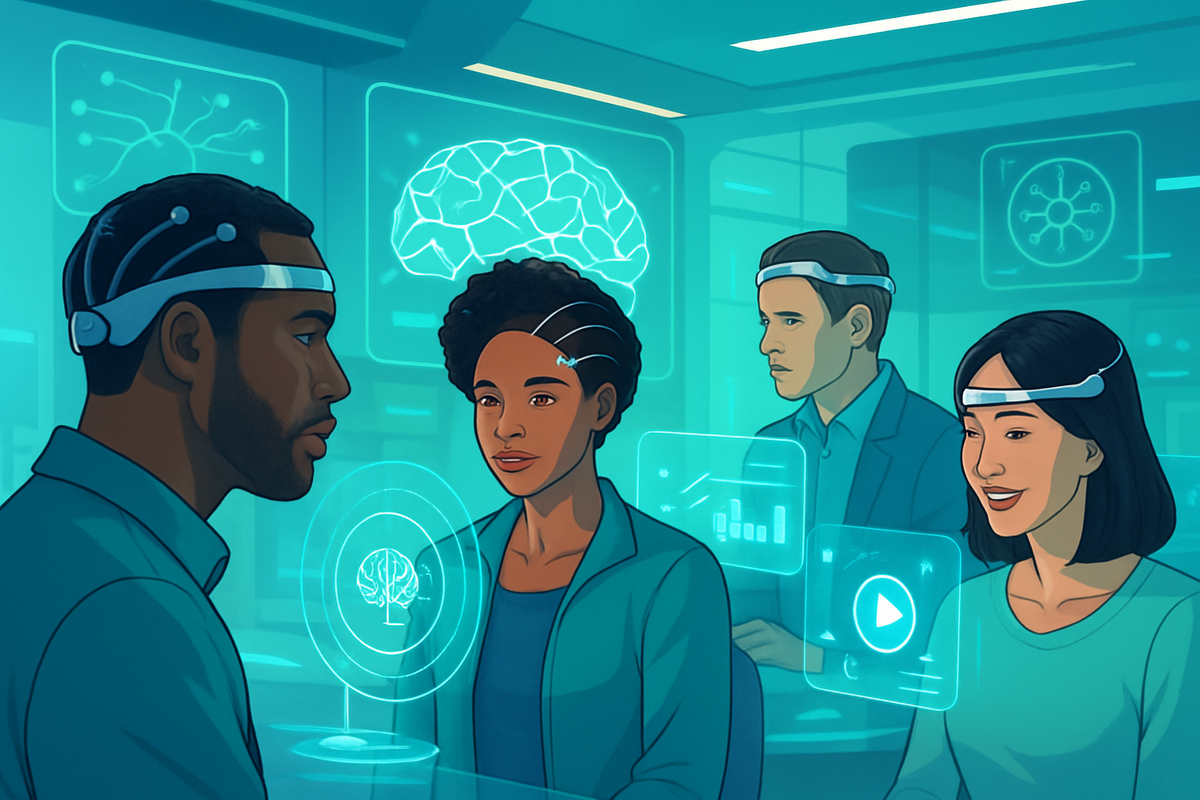The Brain-Tech Race: How Next-Gen Implants Will Reshape Human Experience
Unlock the future where thoughts control technology. Explore brain-computer interfaces and their potential to revolutionize communication, accessibility, and entertainment, while considering the ethical challenges we must navigate in this rapidly advancing field.

Imagine texting your friends, controlling your wheelchair, or composing a symphony—using only your thoughts. Welcome to the mind-bending world of brain-computer interfaces (BCIs), where science fiction is rapidly becoming science fact. As of July 31, 2025, the race to connect mind and machine is no longer a thought experiment; it’s a high-stakes, billion-dollar sprint featuring the likes of Neuralink, Paradromics, Synchron, and more.
The Brain-Tech Revolution: How Did We Get Here?
For decades, the idea of plugging our brains into computers was the stuff of Hollywood blockbusters and late-night philosophy debates. But recent breakthroughs have changed everything:
- Paradromics completed its first human brain implant in May 2025, recording neural activity in just 20 minutes during epilepsy surgery—a feat that made headlines and turned heads across the neurotech world.
- Neuralink (yes, that Neuralink—Elon Musk’s brainchild) is deep into clinical trials, with several patients already controlling digital devices purely by thought.
- Synchron and Precision Neuroscience are racing to market with their own next-gen BCIs, attracting investments from tech titans and medical giants alike.
The implications? Nothing short of a paradigm shift in how we think, communicate, heal, and play.
BCI Tech 101: How Do These Mind-Machines Actually Work?
Let’s take a peek under the (neural) hood. Modern BCIs are tiny arrays of electrodes—think of them as ultra-sensitive microphones for your brain—implanted either on the surface or within the cortex. These arrays listen to your neurons firing, decode their meaning, and translate those electrical whispers into digital commands. The result? Direct brain-to-device communication, at speeds that make your old mouse and keyboard blush.
Fun fact: Some BCIs are now so precise they can pick up signals from individual neurons, promising never-before-seen resolution for everything from restoring movement to enhancing memory.
The Frontrunners: Who’s Winning the Brain-Tech Race?
- Paradromics: Their "Connexus BCI" aims to help those with severe motor impairments communicate—by reading signals at the single-neuron level. After a successful human implant, they’re prepping for clinical trials in 2025.
- Neuralink: Already in clinical use with paralyzed patients, Neuralink’s device is designed for high-bandwidth brain-to-computer communication, with an eye on everything from accessibility to gaming (and, yes, maybe even telepathy... eventually).
- Synchron: Their minimally invasive approach—threading electrodes through blood vessels—has wowed both the FDA and the investor class, making BCI surgery less daunting and more scalable.
“We’re not just building medical devices—we’re building new channels for human expression and connection.”
— BCI industry executive, on the future of mind-machine integration
Beyond Medicine: How BCIs Could Change Everything
Sure, the first wave of BCIs is focused on helping people with paralysis or severe disabilities regain independence. But the possibilities don’t stop there:
- Communication: Imagine sending a text, composing an email, or even sharing a mood—without lifting a finger.
- Accessibility: BCIs could revolutionize accessibility for millions, allowing those with speech or movement limitations to interact with the world in entirely new ways.
- Entertainment: The holy grail? Immersive gaming, AR/VR, and creative expression powered directly by your thoughts.
- Work and Learning: Faster interaction with digital tools, enhanced memory, and even brain-to-brain collaboration could transform how we learn and create.
The Big Questions: Ethics, Privacy & The Human Soul
But let’s pump the brakes before we all sign up for brain upgrades. BCIs raise knotty questions worthy of a Black Mirror episode (minus the British accents):
- Who owns your neural data? Decoding thoughts means handling the most personal data imaginable.
- Security: Could BCIs be hacked? (Yikes.)
- Equity: Will brain-tech enhance everyone, or just the privileged few?
- Consent & Autonomy: How do we safeguard against misuse or unwanted manipulation?
Experts are calling for robust regulations, transparency, and—above all—ongoing public dialogue as these technologies move from lab to living room.
What’s Next? Predictions for the Decade Ahead
- 2026-2027: Clinical trials expand; first commercial BCI systems for accessibility hit the market.
- 2028-2030: Mainstream adoption in healthcare and select consumer apps. Early BCI-powered gaming and creative tools emerge.
- 2030+: Integration with AR glasses, smart homes, and—dare we say—brain-to-brain communication?
One thing is certain: The next ten years will challenge our ideas about what it means to be human, and what it means to connect.
Ready to Keep Up With the Mind-Machine Revolution?
If you love exploring the frontiers of tech, health, and human potential, don’t miss a beat. Subscribe for free to become a Funaix Insider—and get the latest breakthroughs, expert interviews, and thought-provoking stories delivered straight to your inbox. (No mind-reading required!)
Sources: Interesting Engineering, arXiv, Penbrief, and additional expert commentary. For a deeper dive, see Paradromics' first human implant coverage and related peer-reviewed studies.




